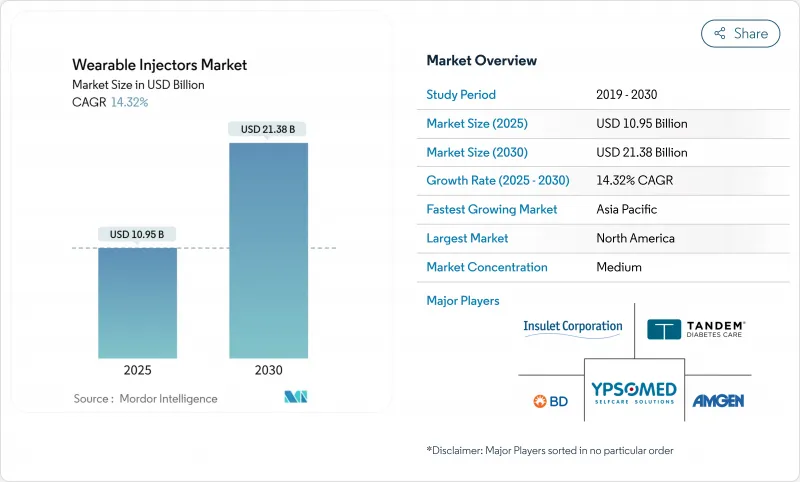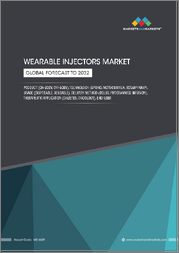
|
시장보고서
상품코드
1842558
웨어러블 주사기 시장 : 시장 점유율 분석, 산업 동향, 통계, 성장 예측(2025-2030년)Wearable Injectors - Market Share Analysis, Industry Trends & Statistics, Growth Forecasts (2025 - 2030) |
||||||
웨어러블 주사기 시장 규모는 2025년에 109억 5,000만 달러로 추정되고, 예측 기간(2025-2030년) CAGR 14.32%로 성장할 전망이며, 2030년에는 213억 8,000만 달러에 달할 것으로 예측됩니다.

급증의 배경은 생물 제제의 승인 건수 증가, 세계적인 만성 질환 인구 확대, 환자 중심의 재택 케어 모델에 대한 헬스 케어 부문의 축족이 있습니다. 의료기기 제조업체는 자체 투여 동향을 지원하기 위해 연결 플랫폼, 고점도 기능 및 사용하기 쉬운 디자인을 선호합니다. 제약회사는 어드히어런스의 향상, 점적 시간의 단축, 병원 이용률의 저감을 위해서 이러한 디바이스를 활용하는 한편, 의료비 억제를 위해서 재택 점적에 대한 환불이 증가하고 있습니다. 경쟁의 심각성은 의약품 제조업체와 제휴하는 기존의 의료 기술 기업에 의해 설정되었지만, 특수 폴리머 및 배터리 수명의 지속성에 있어서 공급망 상의 제약이 가까운 미래의 규모 확대에 대한 과제가 되고 있습니다.
세계의 웨어러블 주사기 시장 동향 및 인사이트
만성 질환의 유병률 증가
당뇨병은 2021년에 세계에서 5억 3,660만 명의 성인을 앓고 있었고, 2045년에는 7억 8,320만 명에 달할 것으로 예측되고 있으며, 병원 밖에서의 폴리파머시를 관리할 수 있는 자동 전달 시스템에 대한 지속적인 수요를 뒷받침하고 있습니다. 미국 성인의 27.1%는 다질환을 앓고 있으며, 이는 10년 전의 21.8%에서 증가하고 있기 때문에 복잡한 투여 스케줄을 추적하는 접속형 주사기의 요구가 높아지고 있습니다. 이러한 추세에서 웨어러블 주사기 시장은 통원 횟수를 줄이고, 복약 준수를 향상시키며, 환자의 QOL을 높임으로써 만성 질환 관리를 실현하는 중요한 수단으로 자리매김하고 있습니다.
웨어러블 주사기 플랫폼의 기술적 진보
마이크로 MEMS의 기술 혁신을 통해 15cP 이상의 고점도 생물학적 제제를 길쭉한 캐뉼라에서 밀어낼 수 있어 환자에게 불편함 없이 10mL의 용량을 투여할 수 있는 온바디 시스템이 실현되었습니다. 실시간 연결, 바늘 자동 철회, IoT 분석은 투여 정확도를 향상시키고 지불자와 임상의를 위한 어드히어런스 데이터를 생성합니다. 약물 전달의 필수 출력에 대한 FDA 지침 초안은 장치 클리어런스를 가속화하는 성능 벤치마크를 설정합니다. 35.7kPa에서 4mL/min의 유량을 달성한 압전 마이크로펌프는 웨어러블 주사기 시장을 재구축하고 있는 정밀도 향상을 더욱 보여줍니다.
대체 약물 전달에 대한 선호
병원 주입 센터는 청구 가능한 이벤트를 발생시키는 전통적인 주입 워크플로우에 여전히 의존하고 있으며, 웨어러블 주사기로의 전환을 늦추고 있습니다. InsuJet과 같은 바늘을 사용하지 않는 기술은 자가주사를 경원하는 환자를 끌어들이고, Rani Therapeutics의 경구 생물학적 제형 캡슐은 궁극적으로 장치 기반 전달을 우회할 수 있습니다. 이러한 옵션은 의료 제공업체의 타성을 고정하고 웨어러블 주사기 시장의 단기 성장을 억제합니다.
부문 분석
스마트 디바이스는 CAGR로 가장 빠른 15.93%를 기록했으며 임상의와 지불자에게 실시간 어드레싱 데이터를 제공하는 통합 센서 및 모바일 앱에 의해 지원되었습니다. 온보디 패치는 당뇨병 치료에서 정착된 사용에 힘입어 2024년 웨어러블 주사기 시장 점유율의 61.62%를 차지해 지배적인 지위를 유지했습니다. 5mL를 넘는 대용량 주사기는 비만 치료제이나 암 치료제에 대응하고, 오프 바디 벨트형은 장시간의 장착이나 대용량 리저버를 필요로 하는 틈새 요구를 충족합니다.
BD의 엡소메드와의 제휴는 유리제 프리필러블 주사기와 고점도 자동주사기를 조합하여 15cP 이상의 점도의 생물제제를 공급하는 것으로, 제약회사의 고농도 제제의 파이프라인에 따른 진보입니다. 차세대 스마트 주사기에 내장된 인공지능 알고리즘은 포도당 및 바이오마커 피드백을 분석하여 투여 간격을 개인화하고 결과를 개선하며 특정 장치 생태계에 대한 고객 로열티를 강화합니다.
지역 분석
북미는 2024년에 웨어러블 주사기 시장의 43.21%를 차지해 FDA의 명확한 규제 패스웨이, 정착한 헬스케어 접속성, 만성 질환이 높은 부담이 그 밑바닥이 되고 있습니다. Insulet의 Omnipod 플랫폼은 2024년에 22%의 매출 성장을 기록한 후 활성 사용자 수가 50만 명을 넘어 기기의 견조한 보급을 보여주었습니다. 대부분의 지불자는 현재 어드히어런스 데이터를 전자 의료 기록에 전송하는 연결 주사기로 환불을 받고 자체 투여 인센티브를 높이고 있습니다.
아시아태평양은 중간층의 확대, 정부의 디지털 헬스 정책, 생물 제제의 출시 증가에 추진되어 2030년까지 CAGR 15.08%로 가장 빠르게 성장할 것으로 예측됩니다. 중국과 일본은 대량 수요와 규제의 근대화를 선도하고 인도, 인도네시아, 태국은 만성 질환의 만연과 모바일 헬스의 보급에 의해 흡수가 가속화되고 있습니다. 그러나 상환이 세분화되고 의료기기에 대한 지출 비율이 낮기 때문에 즉시 확대하기 어렵습니다.
유럽에서는 국경을 넘어 승인을 합리화하는 의료기기 규제의 조화가 공을 이루고, 독일, 프랑스, 영국에서의 예측 가능한 도입이 확보되고 있습니다. 각국의 의료 제도는 통합된 질병 관리 프로그램에 커넥티드 주사기를 통합한 환자 중심의 만성 치료 경로를 중시하고 있습니다. 라틴아메리카와 중동 및 아프리카는 잠재적 가능성을 지니고 있지만, 인프라 결함과 제한된 지불자 범위에 의해 저해된 채로 남아 있기 때문에 벤더는 초기 수요를 파악하기 위해 제휴 가격과 관민 제휴 모델로 방향타를 자르고 있습니다.
기타 혜택 :
- 엑셀 형식 시장 예측(ME) 시트
- 3개월간의 애널리스트 서포트
목차
제1장 서론
- 조사의 전제조건 및 시장 정의
- 조사 범위
제2장 조사 방법
제3장 주요 요약
제4장 시장 상황
- 시장 개요
- 시장 성장 촉진요인
- 만성 질환 증가
- 웨어러블 주사기 플랫폼의 기술 진보
- 가정 치료 및 자기 투여로의 전환
- 생물제제 및 고분자 의약품의 파이프라인 증가
- 고점도 제제의 전달을 가능하게 하는 마이크로 MEMS
- 지불자에 의한 디지털 어드히어런스 분석의 채용
- 시장 성장 억제요인
- 대체 약물 전달에 대한 선호
- 개발도상국의 불리한 상환 조건
- 배터리 수명 및 전자 폐기물 처리에 대한 우려
- 주사기 하우징용 특수 폴리머의 부족
- 기술적 전망
- Porter's Five Forces 분석
- 신규 참가업체의 위협
- 구매자의 협상력
- 공급기업의 협상력
- 대체품의 위협
- 경쟁 기업간 경쟁 관계의 강도
제5장 시장 규모 및 성장 예측 : 단위(달러)
- 제품 유형별
- 온 바디 패치 주사기
- 오프 바디 벨트형 주사기
- 스마트 주사기
- 대용량(5mL 이상) 주사기
- 치료 영역별
- 종양학
- 자가면역질환
- 당뇨병
- 심혈관 질환
- 희귀질환
- 최종 사용자별
- 병원 및 클리닉
- 재택치료
- 전문 주입 센터
- 지역별
- 북미
- 미국
- 캐나다
- 멕시코
- 유럽
- 독일
- 영국
- 프랑스
- 이탈리아
- 스페인
- 기타 유럽
- 아시아태평양
- 중국
- 일본
- 인도
- 호주
- 한국
- 기타 아시아태평양
- 중동 및 아프리카
- GCC
- 남아프리카
- 기타 중동 및 아프리카
- 남미
- 브라질
- 아르헨티나
- 기타 남미
- 북미
제6장 경쟁 구도
- 시장 집중도
- 시장 점유율 분석
- 기업 프로파일
- Amgen
- Insulet Corporation
- West Pharmaceutical Services
- Ypsomed
- Becton, Dickinson and Company
- Enable Injections
- Stevanato Group
- Eitan Medical
- Tandem Diabetes Care
- Sensile Medical
- United Therapeutics
- Subcuject
- CeQur
- Sorrel Medical
- Medtronic
- Vetter Pharma
- Nemera
- Oval Medical Technologies
- Gerresheimer
- Recipharm
제7장 시장 기회 및 전망
AJY 25.10.29The Wearable Injectors Market size is estimated at USD 10.95 billion in 2025, and is expected to reach USD 21.38 billion by 2030, at a CAGR of 14.32% during the forecast period (2025-2030).

The surge is anchored in rising biologics approvals, an expanding global chronic-disease population, and the healthcare sector's pivot to patient-centric, home-based care models. Device makers are prioritizing connected platforms, high-viscosity capability, and user-friendly designs to support self-administration trends. Pharmaceutical companies leverage these devices to improve adherence, shorten infusion times, and lower hospital utilization, while payers increasingly reimburse for home infusion to curb care costs. Competitive intensity is set by established med-tech firms partnering with drug manufacturers, yet supply-chain constraints in specialty polymers and battery-life sustainability challenge near-term scaling.
Global Wearable Injectors Market Trends and Insights
Growing Prevalence of Chronic Diseases
Diabetes affected 536.6 million adults worldwide in 2021 and is projected to reach 783.2 million by 2045, underpinning sustained demand for automated delivery systems that can manage polypharmacy outside hospital settings. Multi-morbidity affects 27.1% of US adults, up from 21.8% a decade earlier, amplifying the need for connected injectors that track complex dosing schedules. These trends position the wearable injectors market as a critical enabler of chronic disease management by reducing clinic visits, improving adherence, and elevating patient quality of life.
Technological Advancements in Wearable Injector Platforms
Micro-MEMS innovations now push high-viscosity biologics above 15 cP through slender cannulas, enabling on-body systems to deliver 10 mL volumes without patient discomfort. Real-time connectivity, automatic needle retraction, and IoT analytics refine dosing accuracy and generate adherence data for payers and clinicians. FDA draft guidance on essential drug-delivery outputs establishes performance benchmarks that accelerate device clearances. Piezoelectric micropumps attaining 4 mL/min flow at 35.7 kPa further illustrate the precision gains that are reshaping the wearable injectors market.
Preference for Alternative Drug-Delivery Modes
Hospital infusion centers still rely on traditional IV workflows that generate billable events, slowing transition to wearable injectors. Needle-free technologies such as InsuJet attract patients wary of self-injection, while oral biologic capsules from Rani Therapeutics could eventually bypass device-based delivery. These alternatives anchor provider inertia and temper the near-term growth of the wearable injectors market.
Other drivers and restraints analyzed in the detailed report include:
- Shift Toward Home-Based Treatment & Self-Administration
- Rising Pipeline of Biologics & Large-Molecule Drugs
- Unfavorable Reimbursement in Developing Nations
For complete list of drivers and restraints, kindly check the Table Of Contents.
Segment Analysis
Smart devices recorded the fastest 15.93% CAGR, buoyed by integrated sensors and mobile apps that furnish real-time adherence data to clinicians and payers. On-body patches remained dominant, controlling 61.62% of the wearable injectors market share in 2024, underpinned by entrenched use in diabetes therapy. High-volume injectors, often exceeding 5 mL, address bariatric biologics and cancer therapeutics, while off-body belt formats fill niche needs requiring prolonged wear and large reservoirs.
BD's alliance with Ypsomed couples glass prefillable syringes with high-viscosity autoinjectors to deliver biologics over 15 cP viscosity, an advance aligning with pharma's pipeline of dense formulations. Artificial-intelligence algorithms embedded in next-generation smart injectors personalize dosing intervals by analyzing glucose or biomarker feedback, improving outcomes, and cementing customer loyalty to specific device ecosystems.
The Wearable Injectors Market Report is Segmented by Product Type (On-Body Injectors, Off-Body Injectors, and More), Therapy Area (Oncology, Autoimmune Disease, Diabetes, Cardiovascular Disease, and More), End-User (Hospitals & Clinics, and More), and Geography (North America, Europe, Asia-Pacific, Middle East and Africa, South America). The Market Forecasts are Provided in Terms of Value (USD).
Geography Analysis
North America captured 43.21% of the wearable injectors market in 2024, undergirded by clear FDA regulatory pathways, entrenched healthcare connectivity, and a high burden of chronic disease. Insulet's Omnipod platform alone exceeded 500,000 active users after posting 22% revenue growth in 2024, illustrating robust device adoption. Most payers now reimburse connected injectors that transmit adherence data into electronic health records, aligning incentives for self-administration.
Asia-Pacific is projected to register the swiftest 15.08% CAGR through 2030, propelled by middle-class expansion, government digital-health policies, and rising biologic launches. China and Japan spearhead volume demand and regulatory modernization, while India, Indonesia, and Thailand show accelerating uptake owing to chronic-disease prevalence and mobile-health penetration. Fragmented reimbursement and lower device-spending ratios, however, temper immediate scale-up.
Europe benefits from harmonized medical-device regulations that streamline cross-border approvals, ensuring predictable adoption in Germany, France, and the United Kingdom. National health systems emphasize patient-centric chronic-care pathways that incorporate connected injectors into integrated disease-management programs. Latin America and the Middle East & Africa hold latent potential but remain inhibited by infrastructure deficits and limited payer coverage, steering vendors toward tiered-pricing and public-private-partnership models to seed early demand.
- Amgen
- Insulet
- West Pharmaceutical Services
- Ypsomed
- Beckton Dickinson
- Enable Injections
- Stevanato Group
- Eitan Medical
- Tandem Diabetes Care
- Sensile Medical
- United Therapeutics
- Subcuject
- CeQur
- Sorrel Medical
- Medtronic
- Vetter Pharma
- Nemera
- Oval Medical Technologies
- Gerresheimer
- Recipharm
Additional Benefits:
- The market estimate (ME) sheet in Excel format
- 3 months of analyst support
TABLE OF CONTENTS
1 Introduction
- 1.1 Study Assumptions & Market Definition
- 1.2 Scope of the Study
2 Research Methodology
3 Executive Summary
4 Market Landscape
- 4.1 Market Overview
- 4.2 Market Drivers
- 4.2.1 Growing Prevalence of Chronic Diseases
- 4.2.2 Technological Advancements in Wearable Injector Platforms
- 4.2.3 Shift Toward Home-Based Treatment & Self-Administration
- 4.2.4 Rising Pipeline of Biologics & Large-Molecule Drugs
- 4.2.5 Micro-MEMS Enabling High-Viscosity Formulation Delivery
- 4.2.6 Payer Adoption of Digital Adherence Analytics
- 4.3 Market Restraints
- 4.3.1 Preference for Alternative Drug-Delivery Modes
- 4.3.2 Unfavorable Reimbursement in Developing Nations
- 4.3.3 Battery-Life & E-Waste Disposal Concerns
- 4.3.4 Shortage Of Specialty Polymers for Injector Housings
- 4.4 Technological Outlook
- 4.5 Porter's Five Forces Analysis
- 4.5.1 Threat of New Entrants
- 4.5.2 Bargaining Power of Buyers
- 4.5.3 Bargaining Power of Suppliers
- 4.5.4 Threat of Substitute Products
- 4.5.5 Intensity of Competitive Rivalry
5 Market Size & Growth Forecasts (Value in USD)
- 5.1 By Product Type
- 5.1.1 On-body Patch Injectors
- 5.1.2 Off-body Belt Injectors
- 5.1.3 Smart Injectors
- 5.1.4 High-volume (>=5 mL) Injectors
- 5.2 By Therapy Area
- 5.2.1 Oncology
- 5.2.2 Autoimmune Disorders
- 5.2.3 Diabetes
- 5.2.4 Cardiovascular Diseases
- 5.2.5 Rare & Orphan Diseases
- 5.3 By End User
- 5.3.1 Hospitals & Clinics
- 5.3.2 Home Care Settings
- 5.3.3 Specialty Infusion Centers
- 5.4 By Geography
- 5.4.1 North America
- 5.4.1.1 United States
- 5.4.1.2 Canada
- 5.4.1.3 Mexico
- 5.4.2 Europe
- 5.4.2.1 Germany
- 5.4.2.2 United Kingdom
- 5.4.2.3 France
- 5.4.2.4 Italy
- 5.4.2.5 Spain
- 5.4.2.6 Rest of Europe
- 5.4.3 Asia-Pacific
- 5.4.3.1 China
- 5.4.3.2 Japan
- 5.4.3.3 India
- 5.4.3.4 Australia
- 5.4.3.5 South Korea
- 5.4.3.6 Rest of Asia-Pacific
- 5.4.4 Middle East & Africa
- 5.4.4.1 GCC
- 5.4.4.2 South Africa
- 5.4.4.3 Rest of Middle East & Africa
- 5.4.5 South America
- 5.4.5.1 Brazil
- 5.4.5.2 Argentina
- 5.4.5.3 Rest of South America
- 5.4.1 North America
6 Competitive Landscape
- 6.1 Market Concentration
- 6.2 Market Share Analysis
- 6.3 Company Profiles (includes Global level Overview, Market level overview, Core Segments, Financials as available, Strategic Information, Market Rank/Share for key companies, Products & Services, and Recent Developments)
- 6.3.1 Amgen
- 6.3.2 Insulet Corporation
- 6.3.3 West Pharmaceutical Services
- 6.3.4 Ypsomed
- 6.3.5 Becton, Dickinson and Company
- 6.3.6 Enable Injections
- 6.3.7 Stevanato Group
- 6.3.8 Eitan Medical
- 6.3.9 Tandem Diabetes Care
- 6.3.10 Sensile Medical
- 6.3.11 United Therapeutics
- 6.3.12 Subcuject
- 6.3.13 CeQur
- 6.3.14 Sorrel Medical
- 6.3.15 Medtronic
- 6.3.16 Vetter Pharma
- 6.3.17 Nemera
- 6.3.18 Oval Medical Technologies
- 6.3.19 Gerresheimer
- 6.3.20 Recipharm
7 Market Opportunities & Future Outlook
- 7.1 White-space & Unmet-need Assessment

















